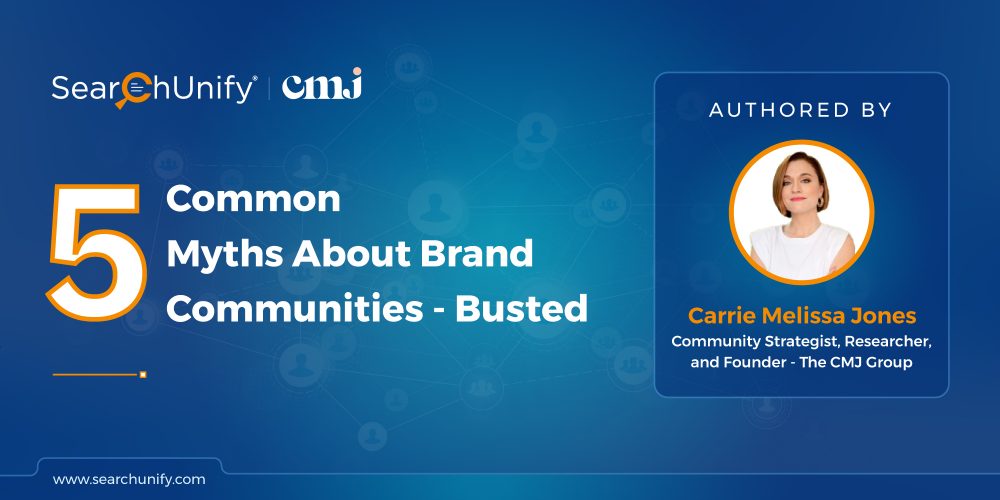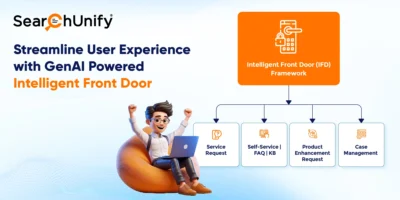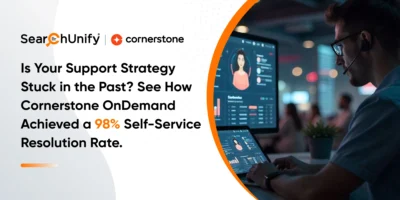
Is your brand community thriving? Or are you struggling to spark the kind of engagement you hope for?
It’s common for organizations to launch brand communities with a bang—only to face stunted growth shortly after.
So how do you ensure your brand community doesn’t fizzle right out of the gate? Let me help you with that.
Scrap Those Misconceptions
For over a decade, I have partnered with businesses of all sizes to strategize and help their communities reach their potential.
While there’s no one-size-fits-all checklist to build thriving brand communities, I have identified many common misconceptions that can hold businesses back from success. If you’re under the influence of one or more of these, it’s time to reframe.
Myth 1: Just launch that community! It will organically thrive and engage users.
Unless you’ve got Kevin Costner on your team, I don’t recommend subscribing to the “if you build it, they will come” mentality.
There’s a difference between authentic brand communities and mirage communities. An authentic community is a group of people who share a mutual concern for each other’s welfare.
Conversely, mirage communities are focused on vanity metrics and shallow interaction. Numbers—often the wrong numbers—drive these. These communities do not necessarily prioritize creating an environment for healthy engagement.
Nurturing an authentic community requires strategic planning, effort, and analytics to provide insight into what works. And a lot of listening.
This also applies to content creation. Many folks believe they must generate as much content as possible for success. Wrong. Instead, it is important to produce quality content that resonates with your community members. Don’t just create content for content’s sake.
Myth 2: Brand communities are only good for boosting brand awareness and customer loyalty.
A community can take your organization to another level. (And don’t get me started on the changes that are possible when your whole organization embraces community. That’s for another blog post.)
If nurtured properly, a brand community can positively influence multiple objectives beyond brand awareness and customer loyalty—though it’s helpful for those outcomes too. Communities can also nurture brand advocates, scale customer success, drive customer lifetime value, clarify your product roadmap, and much more.
However, all of these outcomes can only be achieved with the help of a strong internal culture of collaboration and willingness to engage deeply with customers. (Community work is connection work.)
All said and done, I recommend starting with the single most important outcome and optimizing toward that outcome before adding on any major new strategic focuses to your community. You can always add later; removing aspects of the community is much more difficult.
During the lead-up to the launch of your community, emphasize improving inter-team conversations and collaboration toward this outcome. For example, if you want to clarify your product roadmap through your community, work closely with your product and product marketing teams to ensure you have open communication and clear expectations for what is to come.
Internal unification around one key outcome allows your community members to feel acknowledged inside the community while building trust with your brand as they witness swift action taken by a cross-functional team ready to listen and act on their feedback.
Myth 3: Communities don’t require their own allocated budget.
Another widespread myth about brand communities is that buying a community platform is the only budget item you’ll need.
That might be a very important piece of the budget. But it is patently false that technology is all you need. That line of thinking will lead you to some tough spots.
Brands that do not have a specified budget for community management often run into multiple roadblocks. They quickly realize that they need ancillary technology, technical services, design, and, of course, a budget for community management and moderation.
I recommend that, rather than guessing based on limited information, you budget for an experienced community strategist who can map out a realistic (and uniquely informed) forecast for you.
This will save you money in the long run. We’ve helped clients save hundreds of thousands of dollars annually in unnecessary expenses and mismatched technical and tactical solutions.
Myth 4: Brand communities are marketing tools that check off a box in your marketing plan.
Brand communities don’t just push the marketing agenda. On the contrary, when brands solely focus on the marketing aspect of building a community, their communities turn into sales-oriented, transactional spaces that turn off their community members.
Communities must be thought of as long-term relationship-building strategies. The ROI of communities is often not immediately quantifiably measurable, at least not in a way that will wow a marketing team. That doesn’t mean it’s time to give up. Communities take about 18 months to find equilibrium and provide consistent business and member benefits.
Myth 5: Sending personalized newsletters is enough to stoke engagement fires.
Don’t get me wrong, sending personalized newsletters to your community users is a great first step. Many organizations never even make it this far. However, email is just one touchpoint. And communities require multiple touchpoints to maintain engagement.
Sending regular newsletters will get you the bare minimum levels of engagement. You should pair them with direct outreach, such as through messages, social media, and direct emails.
Artificial Intelligence (AI) can help you out here in myriad ways! Find tools that provide a deep understanding of user journeys and interactions, allowing you to plan community engagement and personalized outreach accordingly. If done carefully and ethically, AI does not remove humanity from your community. It will help you accelerate repetitive tasks, identify top users to build relationships with and focus your content strategy. All this help will free your time to focus on relationship-building and conversations rather than rote tasks.
Turn Your Brand Community Into One of Your Greatest Assets
As a community strategist, researcher, and founder of The CMJ Group, I have led many online communities to success.
The secret lies in pinpointing gaps in your strategy and thoughtfully addressing them. So allow me to demystify many more harmful myths that will hold your business back. Together, we can create a strategy that enables you to increase your community’s ROI and connect with users personally.
Find tips to achieve your goals and light up your path to success with my book, Building Brand Communities. You can get the first chapter and handy strategy worksheets at this link.











